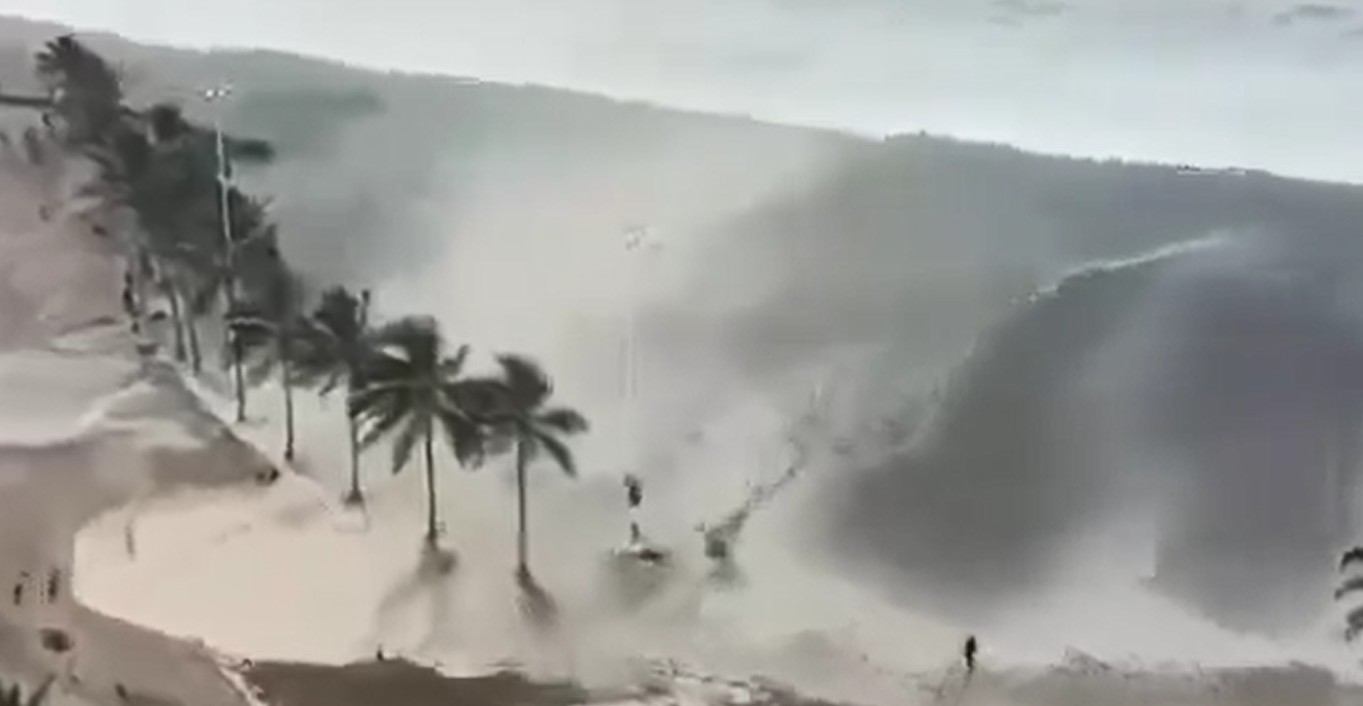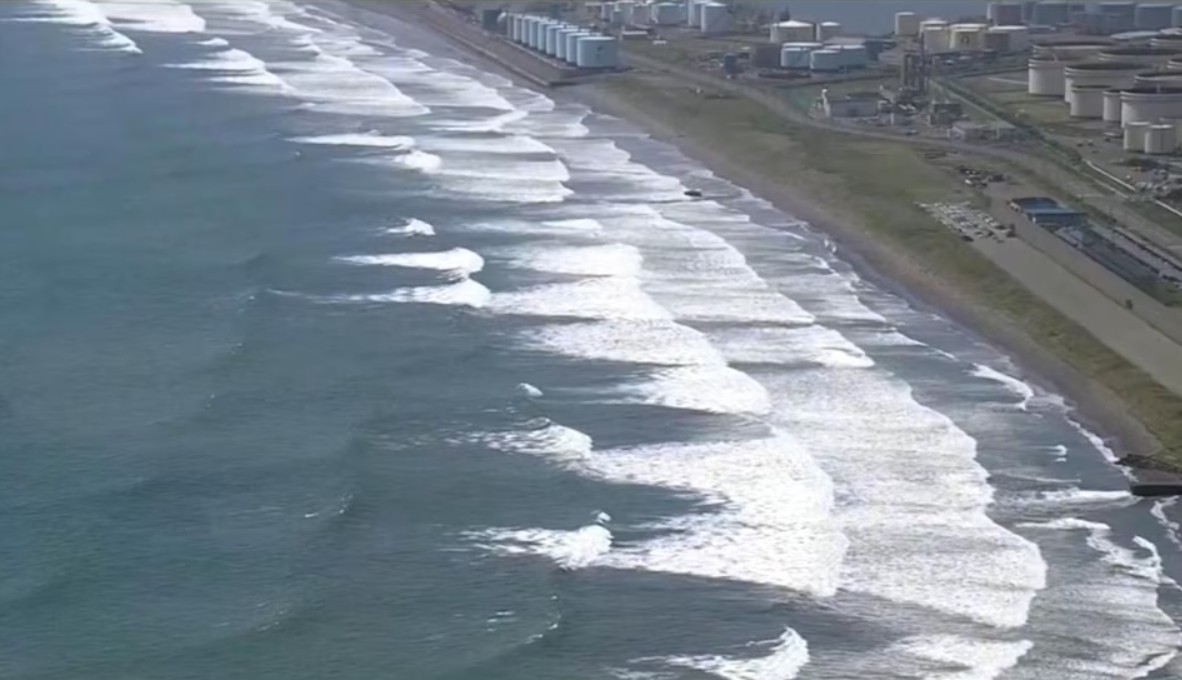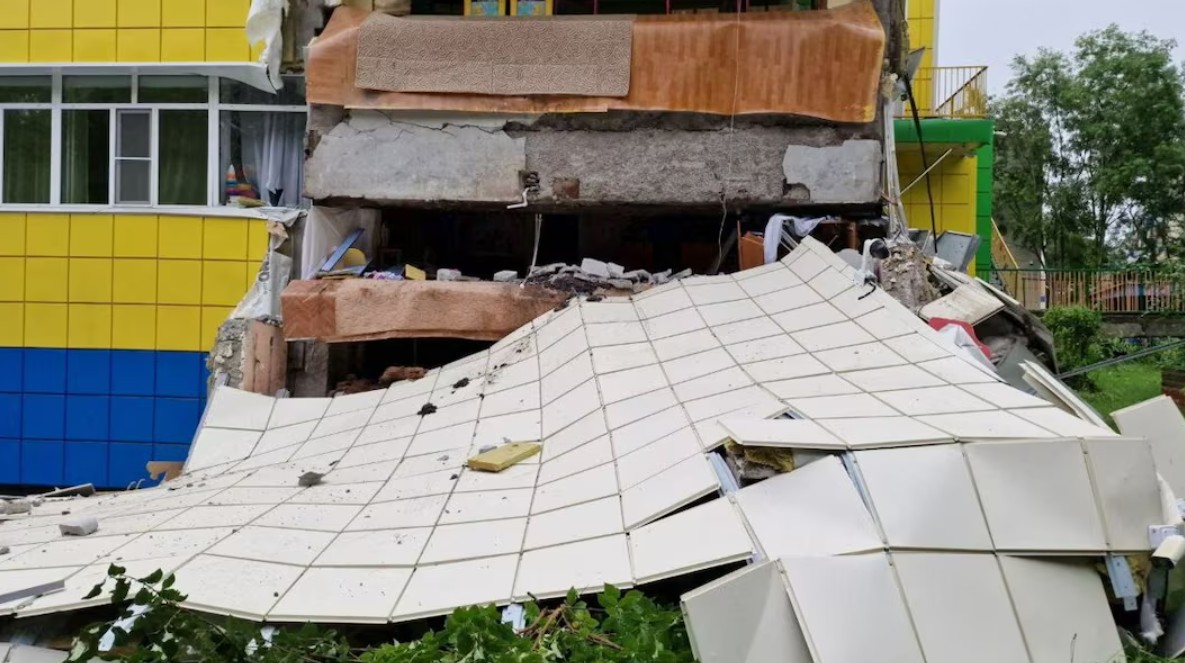In a dramatic reminder of nature’s unpredictable force, a massive 8.8-magnitude earthquake struck off Russia’s eastern coastline on Wednesday, shaking the Kamchatka Peninsula and sending tsunami warnings rippling across the Pacific Ocean. The event, recorded as the sixth most powerful earthquake in modern history, triggered mass evacuations and emergency alerts from Japan to Hawaii, Chile, and beyond. Adding to the chaos, a volcanic eruption occurred in the quake’s immediate aftermath, further rattling the already shaken region.

A Cataclysmic Tremor and List Video
The powerful earthquake hit just before 1:30 p.m. Hawaii Standard Time, with its epicenter located 119 kilometers (74 miles) east-southeast of Petropavlovsk-Kamchatsky, a city of approximately 165,000 residents. The U.S. Geological Survey (USGS) initially registered the quake at a magnitude of 8.0 before later upgrading it twice first to 8.7 and finally to 8.8.
What made this quake especially dangerous was its shallow depth measured at just 19.3 kilometers (12 miles) below the seabed. Shallow undersea quakes have the greatest potential to displace large volumes of water, forming tsunamis capable of traveling thousands of kilometers with devastating force. The seismic activity was followed by multiple aftershocks, including tremors as strong as 6.9 magnitude, confirming fears that the Earth’s crust in the region remains unstable.
Initial Impact in Russia and the Kamchatka Peninsula
Russia’s remote eastern Kamchatka Peninsula bore the initial brunt of the disaster. The region suffered damaged buildings, disrupted infrastructure, and injuries to local residents. Authorities declared a state of emergency, while Russia’s Ministry for Emergency Services reported that a kindergarten and sections of the power grid were affected in Sakhalin, leading to temporary power outages.

A video released by the regional health ministry depicted a chilling scene: a team of medical professionals performing surgery in Petropavlovsk-Kamchatsky as the operating theatre violently shook. Meanwhile, lava began spewing from a volcano on Kamchatka, with observers hearing explosions as the quake appeared to trigger volcanic activity the peninsula is home to the largest active volcano in the Northern Hemisphere.
Seismologist Danila Chebrov from the Kamchatka Branch of the Geophysical Service reassured the public, stating, “Aftershocks are currently ongoing. Their intensity will remain fairly high. However, stronger tremors are not expected in the near future.”
Tsunami Repercussions Ripple Across the Pacific
Japan: Alert Systems Activated
As one of the Pacific’s most tsunami-prone nations, Japan immediately issued evacuation orders for thousands of residents along its eastern coastline. Tsunami alarms rang out across multiple coastal towns, sending people to higher ground. Frothy, white waves were seen crashing ashore in northern Japan. The Fukushima nuclear plant infamous for its meltdown in 2011 was temporarily evacuated as a precaution. Although no radiation abnormalities were reported, transportation services, including ferries, trains, and airports, were disrupted throughout the day.
Hawaii: From Panic to Caution
In Hawaii, sirens sounded throughout Honolulu as residents scrambled to follow emergency guidance. Authorities initially ordered evacuations on Oahu and the Big Island, with Black Hawk helicopters and high-water rescue vehicles deployed. Governor Josh Green warned that tsunami waves could cause fatalities, stressing the importance of staying away from shorelines. Waves of up to 1.7 meters (5.6 feet) were recorded before the advisory was later downgraded, and Honolulu airport resumed operations by evening.
US and Canada: West Coast on Alert
A tsunami advisory was issued for much of the U.S. West Coast, from California through Oregon, Washington, and up to British Columbia, Canada. While no large waves crashed inland, experts warned of unpredictable currents and dangerous surges. In Northern California, tsunami activity intensified by Wednesday morning, with 1.1-meter waves hitting Crescent City. In Alaska’s Aleutian Islands, surges of less than 30 centimeters were observed, but strong currents posed continued risks.
The San Francisco Bay Area received a particular warning from the National Weather Service, which cautioned residents about “seriously dangerous currents along beaches and harbors.”
South America and Oceania: Global Vigilance
In Chile, officials raised the tsunami threat to the highest level, initiating evacuations along vast stretches of the country’s Pacific coastline. Meanwhile, French Polynesia issued evacuation orders for parts of the Marquesas Islands, warning of potential waves up to 2.5 meters (8 feet). Local reports indicated waves had already reached several islands by early Wednesday.
In Ecuador’s Galápagos Islands, authorities ordered the precautionary evacuation of low-lying coastal communities. Elsewhere, nations including Mexico, New Zealand, Fiji, Tonga, Samoa, Micronesia, and the Solomon Islands urged coastal populations to stay away from shorelines and to prepare for possible sea surges and unpredictable currents.
Understanding Tsunamis and Alert Systems
As the earthquake unfolded, the Pacific Tsunami Warning Center and other meteorological agencies worked quickly to assess and communicate risks. Dave Snider, a tsunami warning coordinator in Alaska, warned, “A tsunami is not just one wave. It’s a series of powerful waves over a long period of time. The danger can last for hours or even a full day.”

Tsunamis result from undersea quakes that suddenly displace the seafloor, lifting or dropping massive volumes of water. Contrary to popular belief, tsunamis are not usually towering single waves but instead resemble a fast-rising, powerful tide, with multiple waves often spaced over many hours.
Three levels of alert are used to warn the public:
Tsunami Watch: A potential tsunami may develop.
Tsunami Advisory: Tsunami waves are expected to be dangerous.
Tsunami Warning: Significant coastal flooding and water inundation are expected.
Coordinated Global Response
Despite the quake’s historic magnitude and the vast reach of the tsunami, no major fatalities or critical infrastructure collapses were reported, thanks in large part to effective early warning systems, public preparedness, and swift emergency response.
By Wednesday evening, the situation had started to stabilize in many regions. Both Hawaii and Japan downgraded their tsunami warnings, and Russia’s Kamchatka Peninsula cancelled its alerts. The U.S. Secretary of Homeland Security, Kristi Noem, reassured the public, saying, “The worst is over.”
The 8.8-magnitude earthquake off Russia’s coast served as a stark reminder of the unpredictability and raw power of natural forces. Its shockwaves were felt both literally and emotionally across continents. Yet, amid the chaos, global coordination and technological advancement helped avert a major humanitarian disaster.
From Russia’s operating rooms to Hawaii’s beaches, Japan’s nuclear facilities to South America’s shores, this event tested emergency infrastructures and revealed both vulnerabilities and strengths. While the Earth continues to shift beneath our feet, humanity’s collective response remains its best defense.
News –
